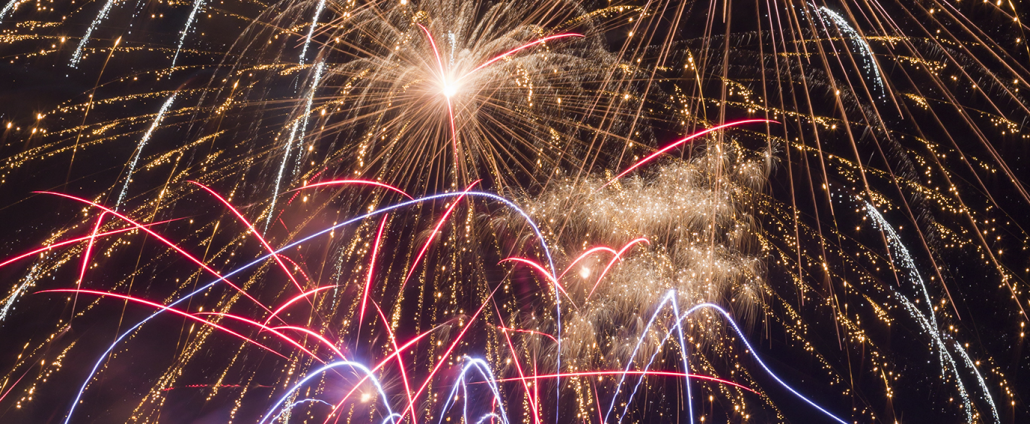Throughout their long history, fireworks have served a variety of purposes. The first “fireworks” could be found in China around the year 200 B.C., where bamboo reeds would be tossed into a fire; the air pockets inside the reed would expand and eventually explode. These controlled blasts were likely used to ward off evil spirits. Between 600 and 900 A.D., an alchemist combined saltpeter with sulfur and charcoal, creating the first recipe for gunpowder. The bamboo reeds would be stuffed with this mixture and set alight, creating larger—and more dangerous—explosions. Soon, China used their invention to create weaponry. In the 13th century, it is believed Marco Polo brought fireworks to Europe. The spectacle became quite popular during the renaissance, and fireworks have remained popular ever since. They have been used to celebrate USA’s Independence Day from the very first anniversary on July 4, 1777. And since Italian pyrotechnicians figured out how to add colors in the 1830s, fireworks displays have stayed much the same to this day.
The technology for running these displays, however, has changed dramatically. It was not until the 1980s that pyrotechnicians created computer programs to choreograph, simulate, and run shows automatically. Before this, calculations had to be done painstakingly by hand, and timing shows to music involved a lot of guess work. Now, computers could do these calculations in minutes rather than hours, and pyrotechnics designers could spend less time worrying about logistics and more time on the creative process. Computers such as the Atari 800XL and the IBM Personal Computer ran some of the first automated fireworks shows, sending signals through a firing box to light the electric matches (known as squibs) with precise timing.
Today, pyrotechnics design has gone even further, with 3D programs that render extremely accurate simulations of a show and communicate with firing devices. Some of these programs are even capable of pulling real 3D models from Google Maps to simulate displays in specific locations. Designers can watch their shows before a single firework is lit. Although fireworks in their construction have remained largely the same over the centuries, the days of guesswork are over, thanks to computers.
If you are planning to set off your own fireworks this year, stay safe and practice common sense. Happy Fourth!
References:
Technology; Fireworks by Computer
https://tedium.co/2019/07/04/fireworks-technology-simulation-history/
